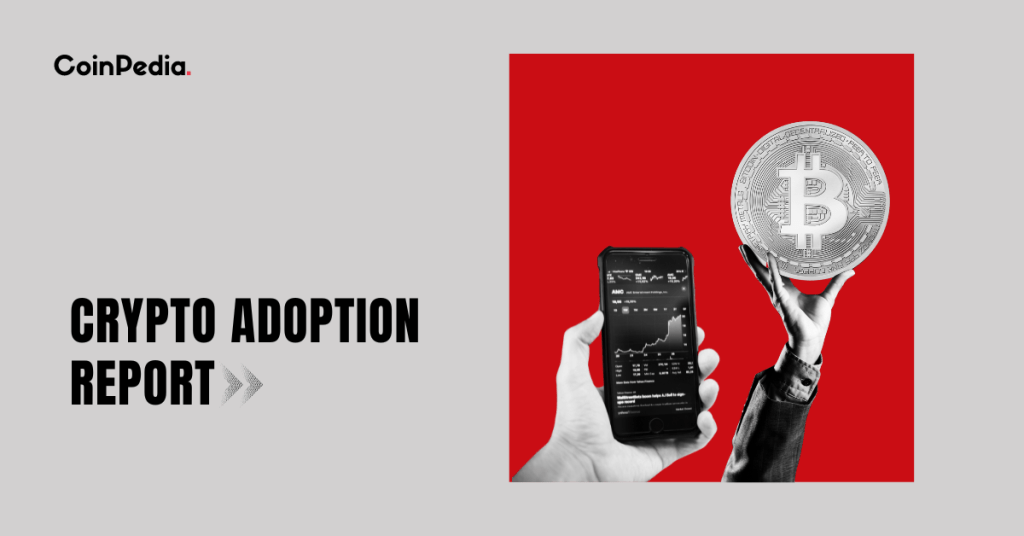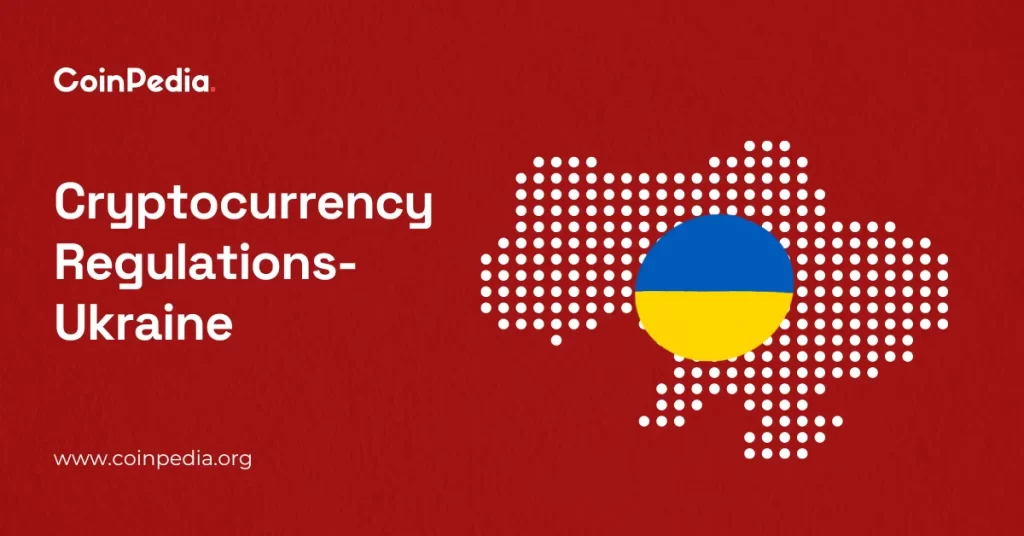Now Reading: Global Crypto Adoption Report 2025
-
01
Global Crypto Adoption Report 2025

Global Crypto Adoption Report 2025
The post Global Crypto Adoption Report 2025 appeared first on Coinpedia Fintech News
Cryptocurrency adoption has surged in 2025, driven by both institutional and grassroots participation across diverse economies. While high-income countries focus on regulatory frameworks and investment products, lower- and middle-income nations lead in real-world crypto use for remittances, inflation hedging, and payments.
This report analyzes the countries with the highest adoption indexes, demographic insights, the most popular cryptocurrencies and stablecoins, legal tender status, and market predictions for the remainder of 2025.
Countries with High Crypto Adoption Index
The Chainalysis Global Crypto Adoption Index and supporting research identify the top countries for crypto adoption based on transaction volume, on-chain activity, and grassroots usage. Lower- and middle-income countries dominate the rankings due to necessity-driven adoption and innovative use cases.
| Rank | Country | Region | Adoption Index Highlights |
| 1 | India | South Asia | Adoption index of 1.000 |
| 2 | United States | North America | Adoption index of 0.671 |
| 3 | Pakistan | South Asia | Adoption index of 0.619 |
| 4 | Vietnam | Southeast Asia | Adoption index 0.524 |
| 5 | Brazil | South America | Adoption index of 0.513 |
| 6 | Nigeria | West Africa | Adoption index of 0.452 |
| 7 | Indonesia | Southeast Asia | Adoption index of 0.433 |
| 8 | Ukraine | Eastern Europe | Adoption index of 0.429 |
| 9 | Phillipines | Southeast Asia | Adoption index of 0.327 |
| 10 | Russian Federation | Eastern Europe | Adoption index of 0.326 |
Other notable countries include the UK, Ethiopia, Bangladesh, Turkey, etc. The report also observed that Asia Pacific (APAC) countries led with 69% in crypto growth, while the Latin American countries followed with 63% growth.
Age and Gender Index of Crypto Holders
Age Distribution:
- 18–34 years: 51% of crypto holders globally
- 35–54 years: 37%
- 55+ years: 8%
Young adults (especially 25–34) are the most active demographic in both emerging and developed markets.
Gender Distribution:
- Male: ~61%
- Female: ~39%
The gender gap is narrowing, with female participation rising fastest in Asia and Africa. Women are more likely to invest in stablecoins and DeFi yield platforms rather than speculative tokens.
| Age Group | % of Crypto Holders | Gender Split (M/F) |
| 18–24 | 20% | 70/30 |
| 25–34 | 31% | 68/32 |
| 35–44 | 23% | 67/33 |
| 45–54 | 18% | 66/34 |
| 55+ | 8% | 65/35 |
Most Adopted Cryptocurrencies (2025)
Bitcoin remains the most sought-after and held cryptocurrency worldwide, followed by Ethereum and stablecoins. Meme coins and DeFi tokens are popular in specific regions.
| Rank | Crypto | Global Ownership (%) | Top Countries Using It |
| 1 | Bitcoin | 62% | US, India, Nigeria, Vietnam, Brazil, UK |
| 2 | Ethereum | 7% | US, Canada, Germany, India, Singapore |
| 3 | Tether (USDT) | 5% | Turkey, Nigeria, Brazil, Indonesia, Vietnam |
| 4 | XRP | 4% | Japan, South Korea, US |
| 5 | Binance Coin (BNB) | 3% | India, Nigeria, Brazil, Vietnam |
| 6 | Solana | 2.5% | US, Singapore, Vietnam |
| 7 | USD Coin (USDC) | 2% | US |
| 8 | Dogecoin | 0.8% | US, India, Philippines |
| 9 | Cardano | 0.8% | Indonesia, US, UK |
| 10 | Tron | 0.7% | US, UK, Singapore |
Most Adopted Stablecoins (2025)
Stablecoins have become essential in emerging markets for remittances, savings, and payments.
| Rank | Stablecoin | Global Market Share | Top Adoption Countries |
| 1 | Tether (USDT) | ~65% | Nigeria, Turkey, Brazil, Vietnam, Indonesia |
| 2 | USD Coin (USDC) | ~20% | US, UK, Singapore, Brazil |
| 3 | Dai (DAI) | ~5% | US, Europe, Latin America |
| 4 | First Digital USD (FDUSD) | ~3% | Hong Kong, Singapore, UAE |
| 5 | Ethena USDe | ~2% | US, Europe, DeFi platforms |
Bitcoin as National Reserve
| Country | Status (2025) | Notes |
| El Salvador | Active reserve | Has over 6,000 BTC as part of the national reserve |
| Bhutan | Active reserve | Accumulation via sovereign mining |
| United States | Announced/active (federal, state) | Strategic reserve established by executive order |
| Czech Republic | Planning/studying | Up to 5% of reserves by 2027 |
| Russia | Planning/legislative proposals | Strategic reserve for sanctions resilience |
| Singapore | Expected/advanced planning | Active digital asset projects |
| UAE | Expected/advanced planning | Major crypto hub, reserve plans in progress |
| Brazil | Drafting legislation | Bills to include BTC in reserves |
| Switzerland | Citizen-led initiative | Proposal for central bank reserves |
| South Africa | Political advocacy | Parties pushing for reserve adoption |
| Indonesia | Bitcoin reserve | Drafted proposal |
| Poland | Political advocacy | Presidential campaign promises |
| Germany | Political/legislative discussion | No formal reserve yet |
| Japan | Political/central bank discussion | No formal reserve yet |
| Hong Kong | Political/legislative discussion | No formal reserve yet |
| Venezuela | Political/legislative discussion | No formal reserve yet |
Crypto Market Prediction for H2 2025
- Market Outlook: Continued growth is expected, driven by institutional investment, new ETF products, and regulatory clarity in the US and EU.
- User Base: Global crypto users projected to surpass 950 million by year-end.
- Bitcoin Price: Analysts forecast BTC could reach $120,000–$140,000 by December 2025, barring major regulatory shocks.
- Stablecoin Expansion: Further growth in emerging markets, especially for remittances and cross-border payments.
- AI & DeFi: AI-driven crypto projects and DeFi platforms will continue to reshape the digital asset landscape.
- Analysts expect Ethereum to break the $4,000 level and potentially reach new all-time highs in 2025.
Major Adoption News – H1 2025 Timeline
| Month | Event/Headline |
| January | US launches Bitcoin Strategic Reserve; ETF inflows surge |
| February | Vietnam legalizes crypto for the first time |
| March | Pakistan Crypto Council launched; CZ joins as advisor |
| April | Thailand recognizes Tether (USDT) as an approved digital asset |
| May | Pakistan announces its first government-backed Bitcoin reserve |
| June | South Korea passes stablecoin legalization bill |
| July | The Genius Act passes in the United States |
| Auguts | Ripple vs SEC officially ends |
Conclusion
Cryptocurrency adoption in 2025 is accelerating at both the institutional and grassroots levels, with lower- and middle-income countries leading in real-world usage and high-income nations advancing regulatory clarity.
Bitcoin and stablecoins are the most widely adopted assets, serving as both investment vehicles and practical tools for payments and remittances. With new legal frameworks, technological innovation, and growing user confidence, the global crypto ecosystem is poised for further expansion in the second half of 2025.
.article_register_shortcode {
padding: 18px 24px;
border-radius: 8px;
display: flex;
align-items: center;
margin: 6px 0 22px;
border: 1px solid #0052CC4D;
background: linear-gradient(90deg, rgba(255, 255, 255, 0.1) 0%, rgba(0, 82, 204, 0.1) 100%);
}
.article_register_shortcode .media-body h5 {
color: #000000;
font-weight: 600;
font-size: 20px;
line-height: 22px;
text-align:left;
}
.article_register_shortcode .media-body h5 span {
color: #0052CC;
}
.article_register_shortcode .media-body p {
font-weight: 400;
font-size: 14px;
line-height: 22px;
color: #171717B2;
margin-top: 4px;
text-align:left;
}
.article_register_shortcode .media-body{
padding-right: 14px;
}
.article_register_shortcode .media-button a {
float: right;
}
.article_register_shortcode .primary-button img{
vertical-align: middle;
width: 20px;
margin: 0;
display: inline-block;
}
@media (min-width: 581px) and (max-width: 991px) {
.article_register_shortcode .media-body p {
margin-bottom: 0;
}
}
@media (max-width: 580px) {
.article_register_shortcode {
display: block;
padding: 20px;
}
.article_register_shortcode img {
max-width: 50px;
}
.article_register_shortcode .media-body h5 {
font-size: 16px;
}
.article_register_shortcode .media-body {
margin-left: 0px;
}
.article_register_shortcode .media-body p {
font-size: 13px;
line-height: 20px;
margin-top: 6px;
margin-bottom: 14px;
}
.article_register_shortcode .media-button a {
float: unset;
}
.article_register_shortcode .secondary-button {
margin-bottom: 0;
}
}
Never Miss a Beat in the Crypto World!
Stay ahead with breaking news, expert analysis, and real-time updates on the latest trends in Bitcoin, altcoins, DeFi, NFTs, and more.
FAQs
India, Nigeria, and Vietnam lead 2025 crypto adoption due to grassroots usage, remittances, and DeFi activity.
Bitcoin, Ethereum, and Tether (USDT) top global usage, especially in the US, India, Nigeria, and Vietnam.
AI‑powered trading bots and “DeFAI” superapps are boosting usability and adoption
Yes—over 60 non‑crypto firms now hold BTC in treasury, inspired by MicroStrategy’s success











